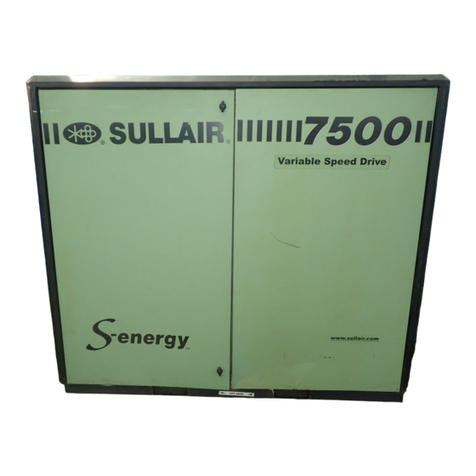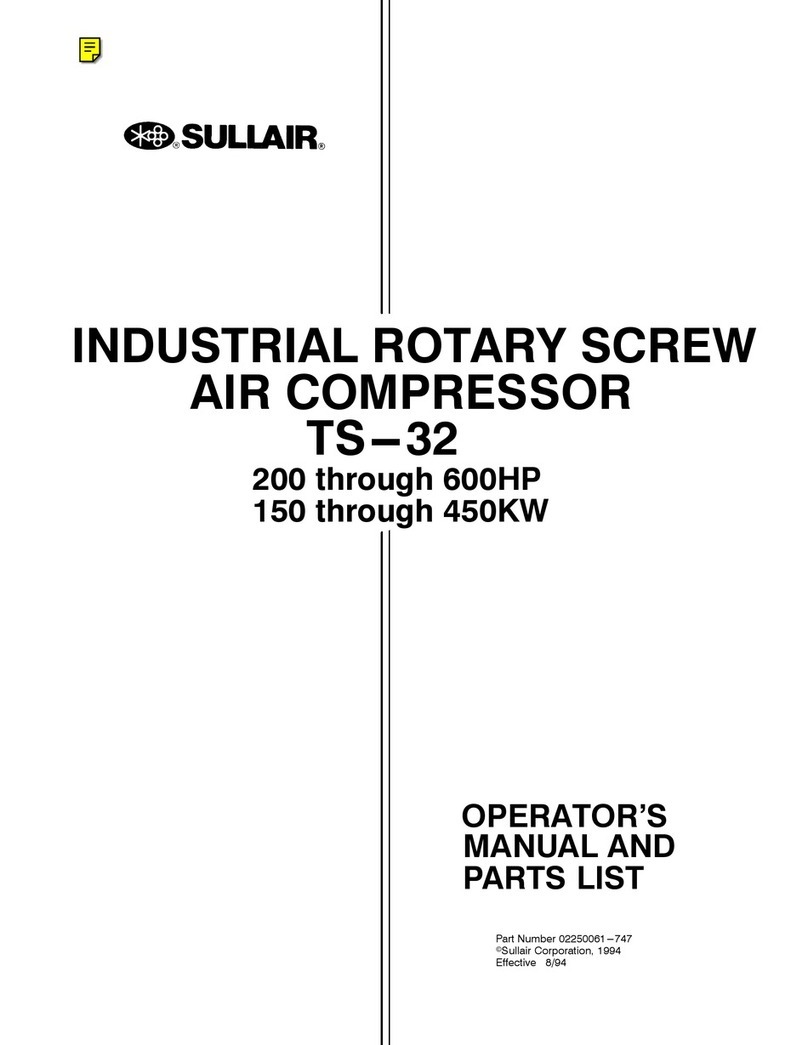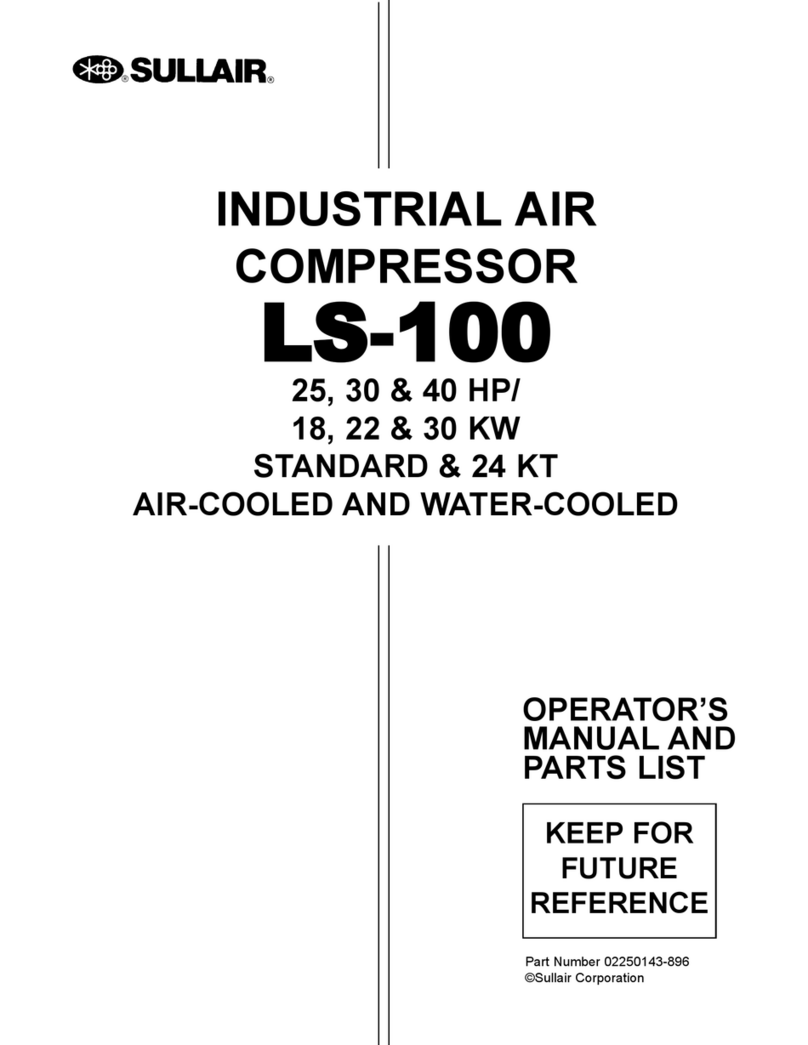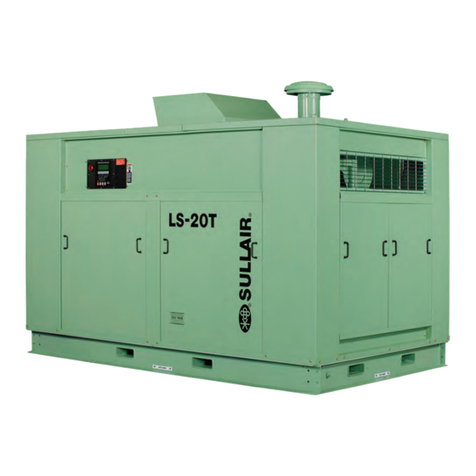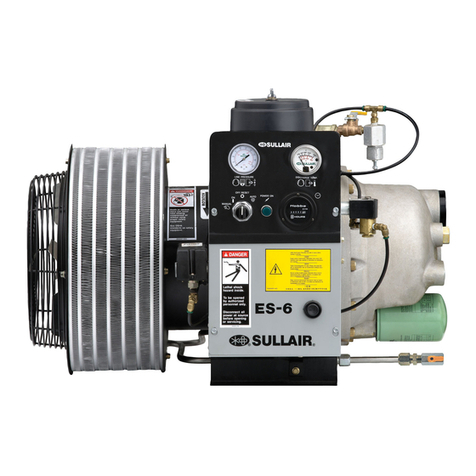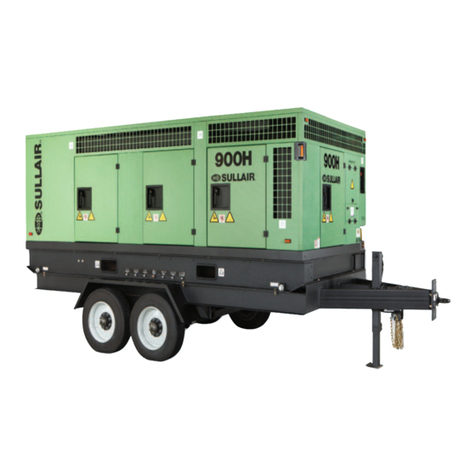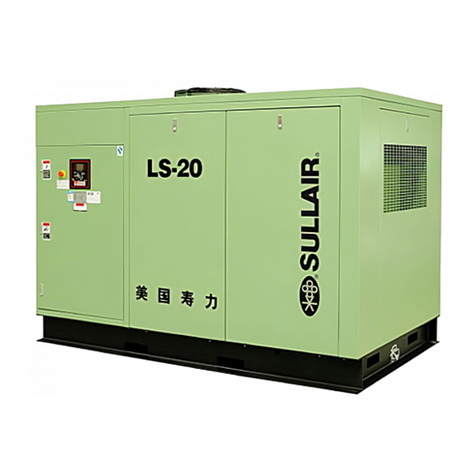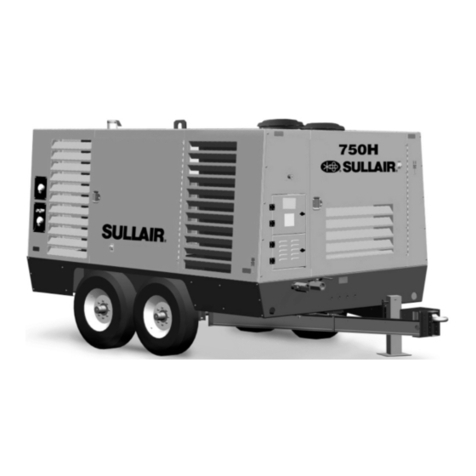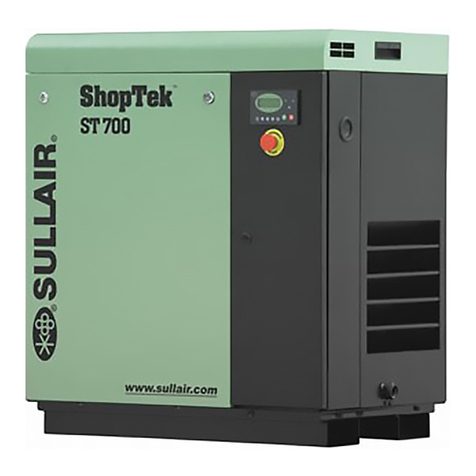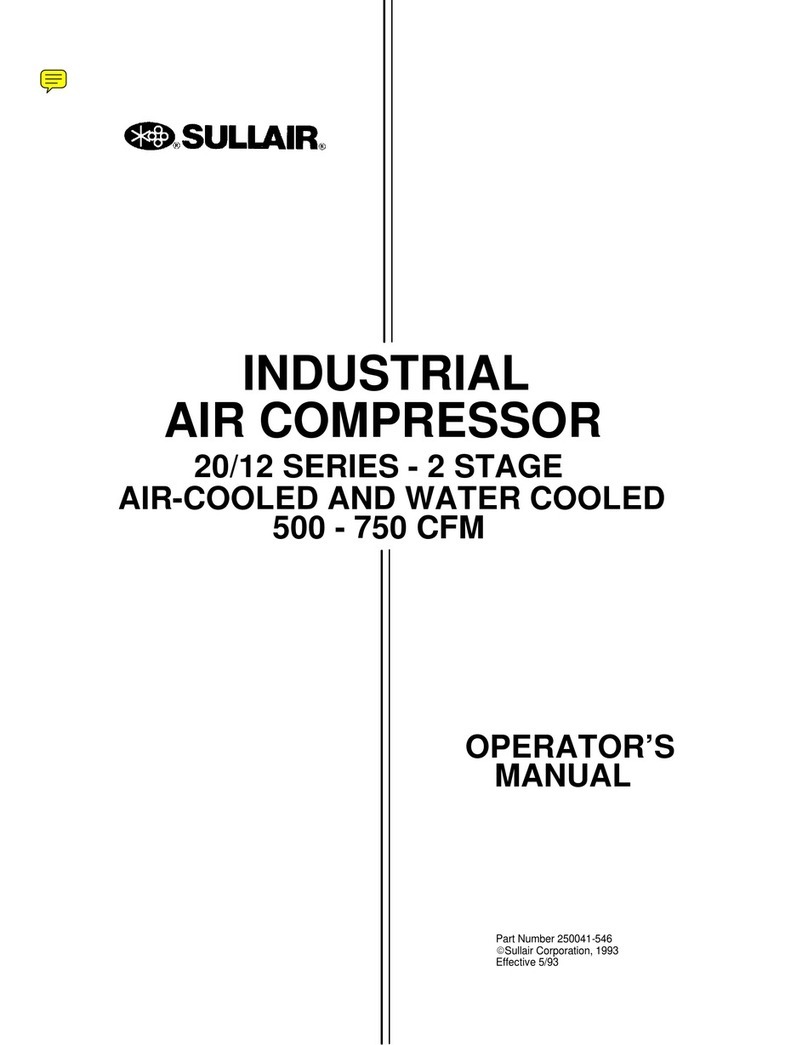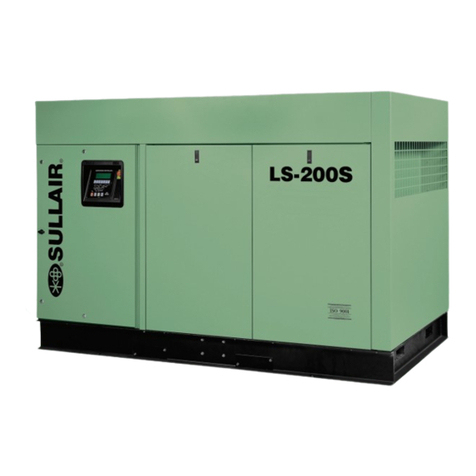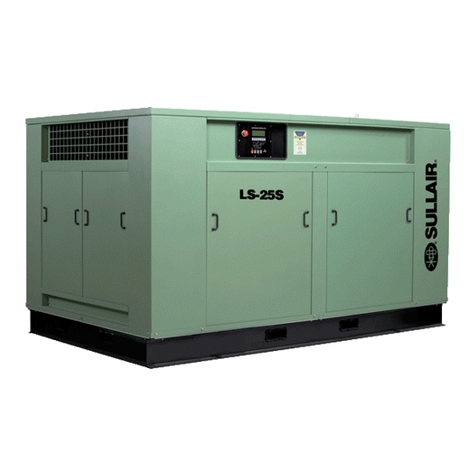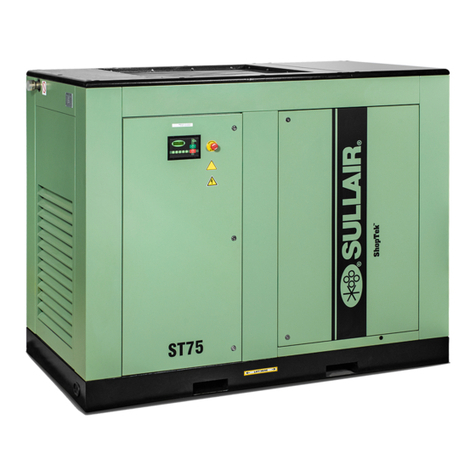
Section 1
SAFETY
1
1.1 GENERAL
Sullair Corporation and its subsidiaries design and
manufacture allof their products so they can beop-
erated safely. However, the responsibility for safe
operation rests with those who use and maintain
theseproducts.Thefollowingsafetyprecautions
are offered as a guide which, if conscientiously fol-
lowed, will minimize the possibility of accidents
throughout the useful life of this equipment.
The ES---8IntegralCompressor/AirDryer shouldbe
operated only by those who have been trained and
delegated to do so, and who have read and under-
stood this Operator’s Manual. Failure to follow the
instructions, procedures and safety precautions in
this manual can result in accidents and injuries.
Read this manual prior to startup.
NEVER start the compressor/dryer unless it is safe
to do so. DO NOT attempt to operate the compres-
sor/dryer with a known unsafe condition. Tag the
compressor/dryer and render it inoperative by dis-
connecting and locking out all power at the source
or otherwise disabling its prime mover so others,
who may not know of the unsafe condition, will not
attempt to operate it untilthecondition is corrected.
Install, use and operate the compressor/dryer only
in full compliance with all pertinent regulations and
allapplicableFederal, State, andLocalcodes,stan-
dards and regulations.
DO NOT modify the compressor/dryer and/or con-
trolsinanywayexceptwithwrittenfactoryapproval.
While not specifically applicable to all types of dry-
ers and/or compressors with alltypes of prime mov-
ers, most of the precautionary statements con-
tained herein are applicable to most dryers and/or
compressors and the concepts behind thesestate-
ments are generally applicable to all dryers and/or
compressors.
1.2 PERSONAL PROTECTIVE EQUIPMENT
Prior to installing or operating the compressor/dry-
er, owners, employers, and users should become
familiar with, and comply with, allapplicable regula-
tionsand/oranyapplicableFederal,StateandLocal
codes, standards, and regulations relative to per-
sonal protective equipment, such as eye and face
protective equipment, respiratory protective equip-
ment, equipment intended to protect the extremi-
ties, protective clothing, protective shields and bar-
riers and electrical protective equipment, as wellas
noise exposure administrative and/or engineering
controls and/or personal hearing protective equip-
ment.
1.3 PRESSURE
WARNING
!
DO NOT remove caps, plugs and/ or other compo-
nents when compressor/dryer is running or pres-
surized. Stop compressor/dryer and relieve all in-
ternal pressure before doing so.
A. Install an appropriate flow---limiting valve be-
tween the service air outlet and the shut---off
(throttle) valve, either at the compressor or at any
other point along the air line, when an air hose ex-
ceeding 1/2” (13mm) inside diameter is to be con-
nected to the shut---off (throttle) valve, to reduce
pressure in case of hose failure, per all applicable
Federal, State and Localcodes, standardsandreg-
ulations.
B.Whenthehoseistobeusedtosupplyamanifold,
install an additional appropriate flow---limiting valve
between the manifold and each air hoseexceeding
1/2”(13mm)insidediameterthatistobeconnected
to the manifold to reduce pressure in case of hose
failure.
C. Provide an appropriate flow---limiting valve at the
beginningofeachadditional75feet(23m)ofhosein
runsofairhoseexceeding1/2”(13mm)insidediam-
eter to reduce pressure in case of hose failure.
D. Flow---limiting valves are listed by pipe size and
rated CFM. Select appropriate valves accordingly,
inaccordancewiththeirmanufacturer’srecommen-
dations.
E. DO NOT use air tools that are rated below the
maximum rating of the compressor. Select air tools,
air hoses, pipes, valves, filters and other fittings ac-
cordingly. DO NOT exceed manufacturer’s rated
safe operating pressures for these items.
F. Secure all connections by wire, chain or other
suitable retaining devices to prevent tools or hose
ends from being accidentally disconnected and ex-
pelled.
G.Open fluid fillercaponlywhen compressor isnot
running and is not pressurized. Shut down the
compressor and bleed the sump (receiver) to zero
internal pressure before removing the cap.
H. Vent all internal pressure prior to opening any air
line, fitting, hose, valve, drain plug, connection or
other components, such as filters and line oilers,
and before attempting torefill optional air line anti---
icer systems with anti---freeze compound.
I. Keeppersonneloutoflinewithandawayfromthe
discharge opening of hoses or tools or other points
of compressed air discharge.
J. Useairatpressureslessthan30 psig(2.1 bar)for
cleaningpurposes,and then onlywitheffectivechip
guarding and personal protective equipment.
K. DONOT tamperwithcompressorsumpandunit
(if provided) relief valves. Check the relief valve as
recommended in the Compressor Maintenance
Section of this manual or at a minimum of at least
weekly to make sure it is not blocked, clogged, ob-
structed or otherwise disabled. DO NOT change
the factory setting of the relief valve.
L. If the compressor/dryer is installed in an en-
closed area, it is necessary tovent therelief valveto
